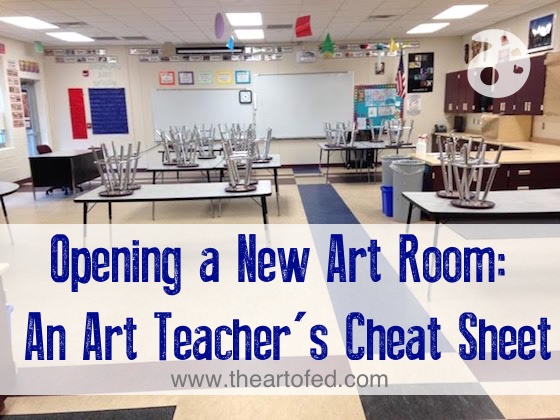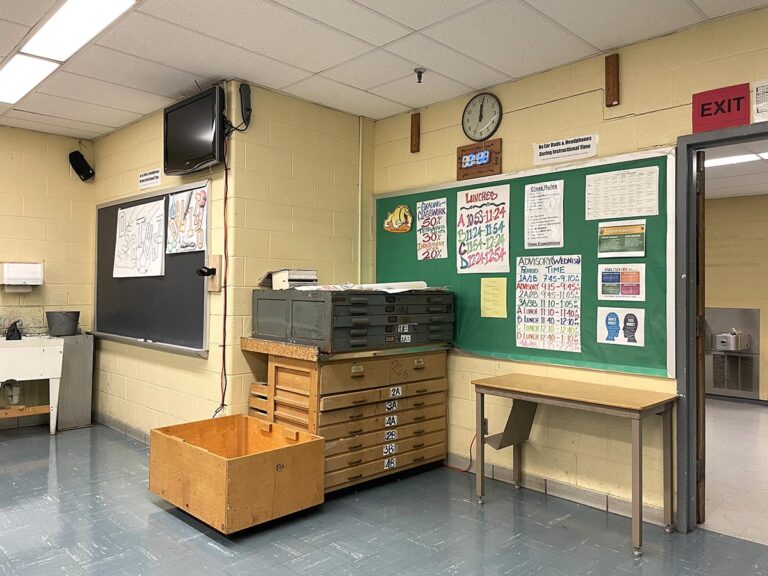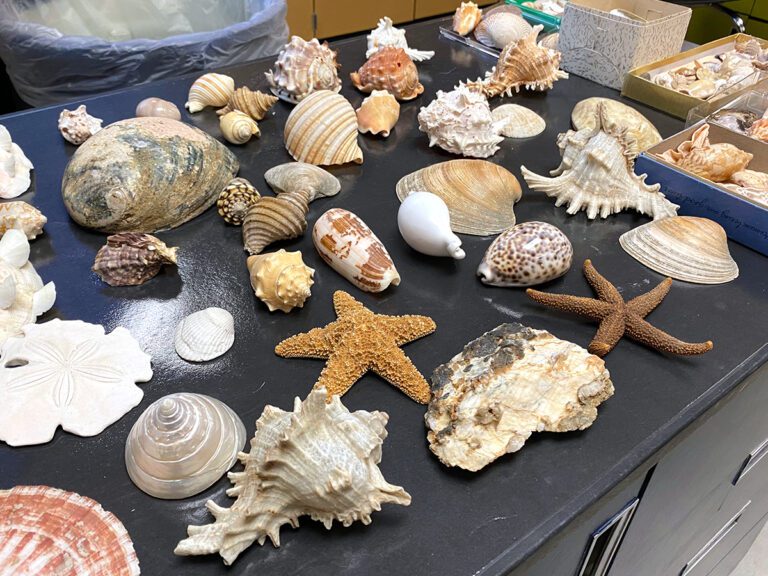
Allison Krook is a K-5 art teacher in a large, growing school district in the Midwest. Because of the rapid growth, the district is opening up new schools left and right. This is exciting but also challenging. As a 4th-year art teacher, Allison was thrust into the wonderful and overwhelming task of starting an art room from scratch.
We’ve received many reader emails asking questions about the daunting process of opening a brand new art room: What do you order? How much storage do you ask for? What about a kiln? Today, I’ve asked Allison to dish about what it’s like to open a new art room. She’ll tell us about the challenges she faced, what she’d do again if she could, and the features she can’t live without. Allison jumped in with open arms and you can too!

Make Storage a Priority
Because Allison’s district is large, she didn’t have a lot of input into the design of the room itself. The layout was chosen based upon a previous school layout and budget considerations. That said, all districts are different, and you may be able to have more say. If so, make sure you ask for plenty of storage space! (Pssst. You can see a full list of suggested supplies to order right here.)
Allison says, “While it seems like a no-brainer, the amount of storage space I have compared to some of the buildings built after mine is enviable among the other art teachers.” Make it a priority!

3 Types of Storage to Consider
Allison told me, “There are three key types of storage that save my sanity: general storage space, storage shelving, and student work drawers.”
For general storage, Allison is lucky to have a closet that runs the length of her room, which contains 10 large, metal shelving units. Here, Allison stores paper and other supplies she wants to keep out of the way. According to Allison, it has allowed her to hoard supplies with ease!

In addition, Allison loves having student work drawers in the classroom. Allison says, “I honestly don’t know what I’d do without them!” Since Allison stores student work all year long, having enough storage for this specific purpose is important.

Other Considerations
I asked Allison, “Besides good storage, what else would you recommend for a new art room?” Here’s what she had to say.
Technology
Allison suggests getting a projector that is mounted to the wall or ceiling from the get go. Allison started out with a projector on a cart. When she switched to a wall-mounted projector thanks to a grant and funding from her PTO, the process got tricky. Allison told me, “Because everything had to be retrofitted, it was difficult to find places for everything.”
After having gone through this ordeal, Allison had a great idea: When designing your room, have your school’s tech person give you a recommendation about where things like outlets and internet connections should be placed. Make sure that any future projector will be able to easily connect to your computer. The flow of technology should make sense. Bring in an expert upfront to avoid problems down the road.
One hidden benefit of having a well-designed space is a decrease in behavior issues. It’s why students in the AOE course Managing the Art Room spend time learning how to create a calm classroom environment with solid routines and procedures. Having everything in a set place is key to getting off to the right start!
Arrangement of Space
You can have the most amazing equipment in the world, but if it isn’t arranged well, your room isn’t going to work. Make sure you designate areas for whole group teaching, small group teaching, and independent work.
One of Allison’s best purchases was her kidney table, which you can see in the image below. According to Allison, “I have always liked to demonstrate with students around a table, so I made sure to order a large table for this specific purpose. While I also have a document camera that I can use to demonstrate with, I prefer sitting down with the kids, face to face. I feel like I’m able to read their understanding and engage with them more when they are with me. The space is also great for teaching and re-teaching concepts to small groups of students. Plus, it gives me the chance to sit down once in a while!”

Of course, your needs will be different based on your teaching style and your students. Think about how to break up the space in a way that makes sense for you. For example, in your room, it may make sense to include a few large work tables where students can collaborate or a row of tables to use for a computer station.
The Kiln Room
Don’t design an art room without an attached kiln room! Allison told me that having this storage space is imperative to her being able to teach her 750+ students. It’s nice to be able to store all of her students’ wet and in-progress clay pieces in one space. If you have the chance, make sure the room fits not only the kiln but some sturdy shelves as well. Of course, keep safety in mind! Check out these comprehensive checklists courtesy of clay guru John Post to keep yourself on track.


Seize the Opportunity!
Allison told me, “One of the things I was most surprised about was that none of the experienced teachers in my district at the time were interested in opening a new art room. I’m not sure if this was because they already had established rooms, schools, students and staff that they did not want to part with or if they thought the task of opening a new room would be too overwhelming.
“From my experience, the process was daunting and a bit hard at first, but over time, I’ve established the room into my own. I’ve collected enough supplies to last and transformed the space from a bare construction zone into a creative space where students feel at home.”
Thank you, Allison!
If you are lucky enough to open a brand new art room, I hope these tips are helpful to you.
Curious about exactly what to order? Check out the article A Complete List of Supplies for Your New Art Room for our recommendations!
Have you helped to design a new art room?
Share your experience with us and add to the list of “must haves!”
Magazine articles and podcasts are opinions of professional education contributors and do not necessarily represent the position of the Art of Education University (AOEU) or its academic offerings. Contributors use terms in the way they are most often talked about in the scope of their educational experiences.




